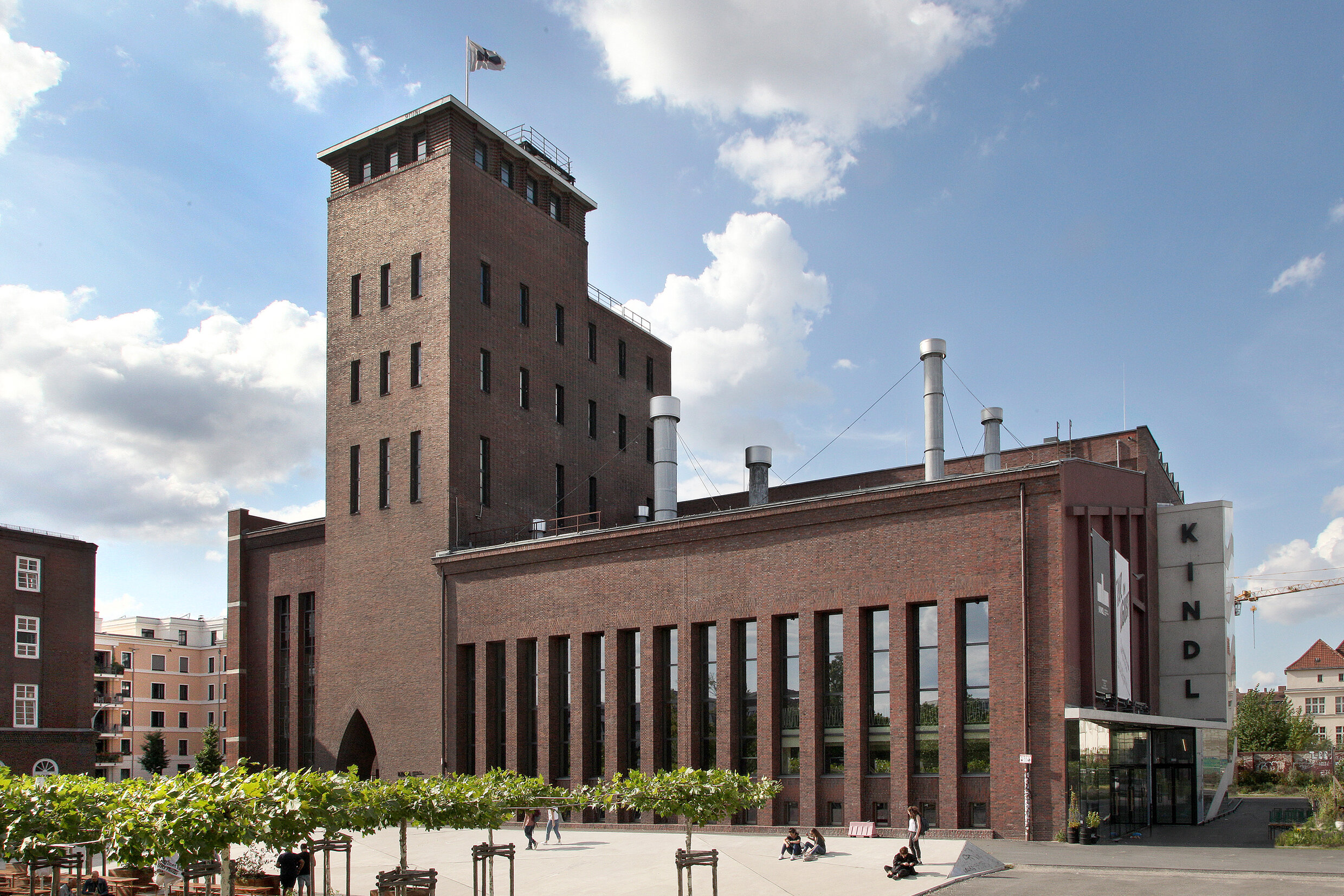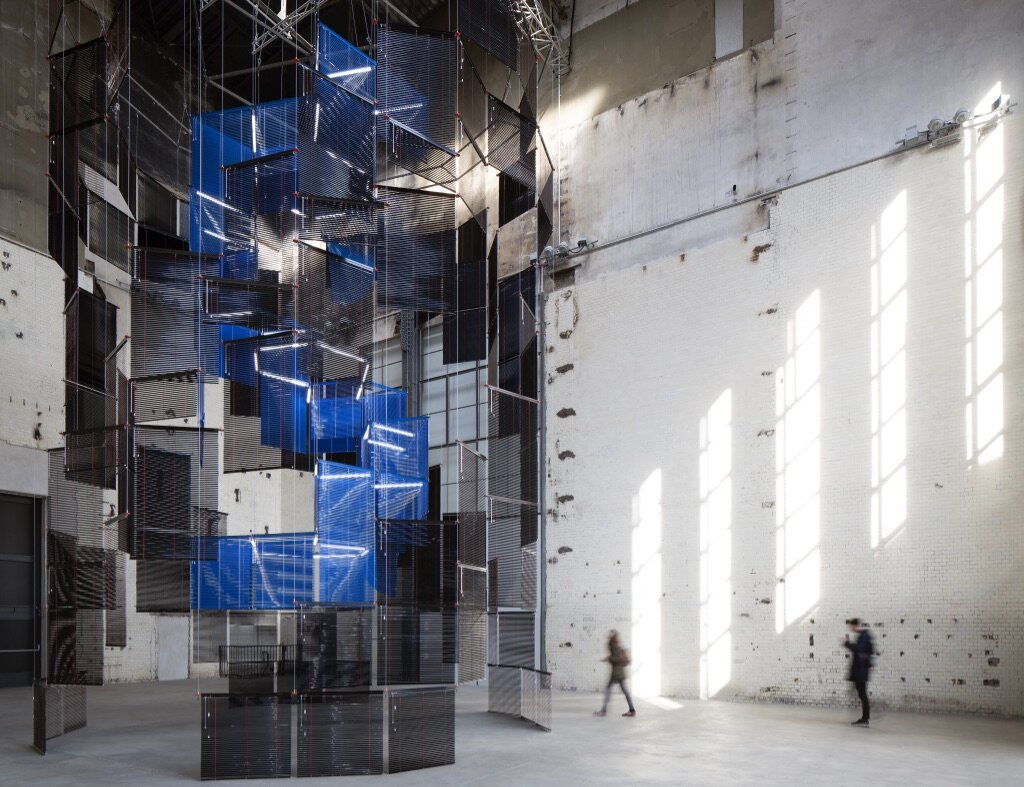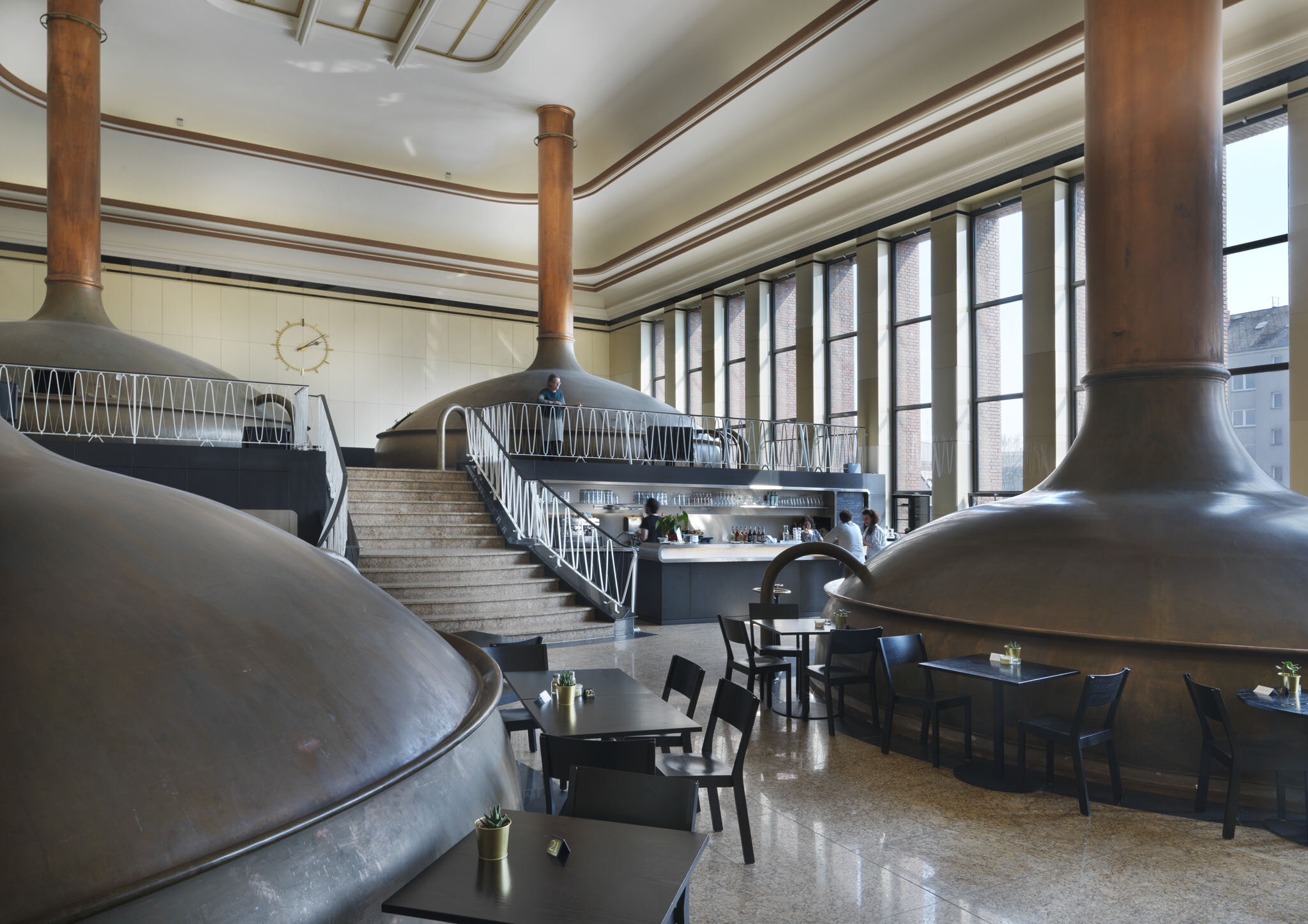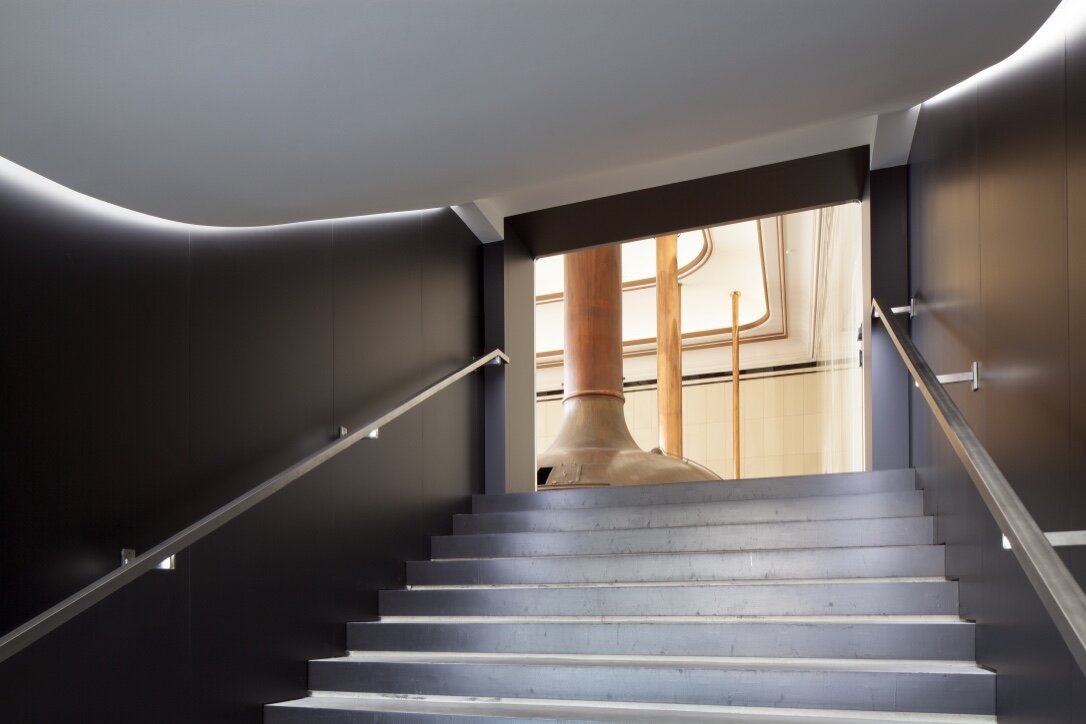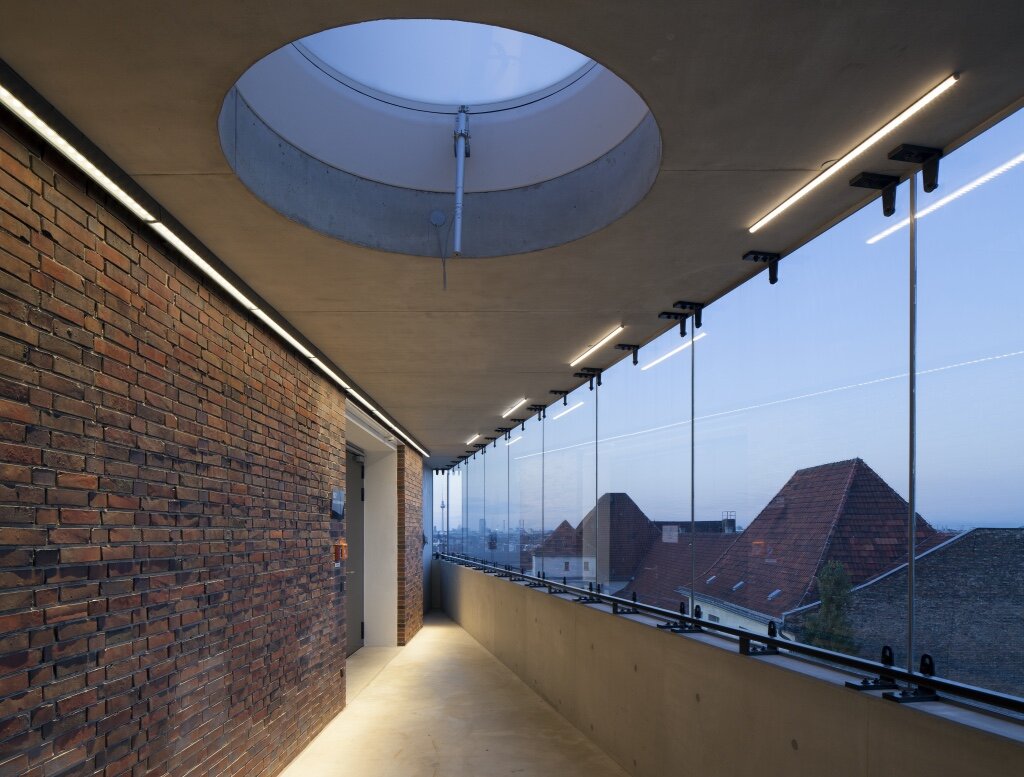KINDL – Centre for Contemporary Art
The KINDL – Centre for Contemporary Art has been presenting temporary exhibitions of international contemporary art since 2016. In addition to painting, sculpture, installations, and performance, film and video presentations are another focus of the institution’s programme. The KINDL sees itself as a place for producing and discussing contemporary art and also reacts to recent artistic developments. The exhibition projects are accompanied by an extensive discursive programme and educational offerings that aim to contribute to the current debate. In February 2020, Kathrin Becker took over as artistic director following the founding director Andreas Fiedler. The focus of her work is on the interaction between social issues and art as a communicative space that enables a critical view of phenomena of a globalised present.
The KINDL is located in a former brewery building with more than 1,600 square metres of exhibition space, which is used for thematic exhibitions and solo projects. The imposing Kesselhaus, with a height and length of around 20 meters on each side, bears traces of its previous use on the walls and has hosted site-specific works by international artists, including Alfredo Jaar (2024 / 2025), Emma Talbot (2023 / 2024), Mona Hatoum (2022 / 2023), Alexandra Bircken (2021 / 2022), Nik Nowak (2020 / 2021), Bettina Pousttchi (2019 / 2020), Thomas Scheibitz (2018 / 2019), Haegue Yang (2017 / 2018), David Claerbout (2016 / 2017), and Roman Signer (2014 / 2015). The three floors of the Maschinenhaus each offer around 400 square meters of exhibition space for solo and group exhibitions as well as the M1 VideoSpace, which opened in 2020. Café Babette serves snacks and drinks in the Sudhaus, and in the warmer months shady spots are available under the plane trees in the beer garden in front of the building, Babette’s Garden.
The industrial complex that is now the KINDL was built between 1926 and 1930 based on a design by architects Hans Claus and Richard Schepke in the style of Expressionism. The Sudhaus with its six giant copper vats—once the largest of their kind in Europe—was previously known as the Palace of Berlin Beer Culture. After its partial destruction in World War II, it was rebuilt in the early 1950s according to plans by the cinema architect Gerhard Fritsche, who also designed the Zoo Palast cinema in Berlin. The conversion of the site, now a protected historical monument, into a centre for contemporary art was the visionary idea of Salome Grisard and Burkhard Varnholt, who acquired the building complex in 2011 and had it carefully renovated. Thanks to the historically sensitive renovation work—for example, the foyer with an exterior stairway in exposed concrete and glass leading to the exhibition areas—the result is a modern venue that can be used in a variety of ways for presenting art, while preserving the industrial character of the building.
With its exhibitions, the discursive programme and educational offerings, the KINDL aims to engage a broad audience with the issues of contemporary art and artists’ approaches and production methods. Lectures, conversations with artists, panel discussions, readings, symposia, tours, workshops, and a varied educational programme offer an accessible way to interact with the institution, with the aim of promoting awareness of social processes and anchoring the KINDL within its neighbourhood, the Rollbergkiez in Neukölln. An important example of the integrative public outreach work at the KINDL is its offerings for local school classes. Students from the neighbourhood meet here for regular workshops as part of an innovative education project that spans several years and school grades. In the dynamic surroundings of northern Neukölln, the KINDL is a place for interaction with the public and a catalyst for urban development. Numerous initiatives and organisations in the neighbourhood around the former brewery have already begun testing models for new forms of living and working.
The KINDL regularly cooperates with cultural institutions and organisers who pursue innovative artistic ideas and reflect contemporary discourses. These include, for example, the Komische Oper as well as citywide and regional festivals such as Tanz im August and 48 Stunden Neukölln.
The KINDL – Centre for Contemporary Art is a non-profit institution. All proceeds flow directly back into the exhibition programme.
Team
Artistic Director
Kathrin Becker
Commercial Director
Georg Lehmann
Curator
Exhibition Manager
Magdalena Mai (on parental leave)
Katherina Perlongo
Sadaf Vasaei
Head of Communication and Discursive Programme
Katja Kynast
Exhibition Manager
Anke Grossmann
Intern
Hannah Klug
Helena McFadzean
Lucy Defty
Event Management
Ulrike Brase
Tom Fuchs
Office Management
Bärbel Kirchhoff
Press
Denhart von Harling / segeband.pr
Coordination Visitor Service and Ticketing
Forster Herchenbach
Coordination of Museum Attendants and Reception
Peter Hübert
Art Education
Christian Kriener
Janna Heiß
Museum Attendants and Mediation
Alejandra Borea
Alice Wäfler
Andreas Krosch
Asieh Salimian
Clara Messerschmidt
Julia Gal
Laura Arda
Martin Moolhuijsen
Mona Freudenreich
Vivian Eckstein
Head of Installation
Jakob Argauer
Facility Management
Friedrich Herz
Markus Remmler
Café Babette
Maik Schierloh
Thomas Welzel
Hannah Chaker-Agha

